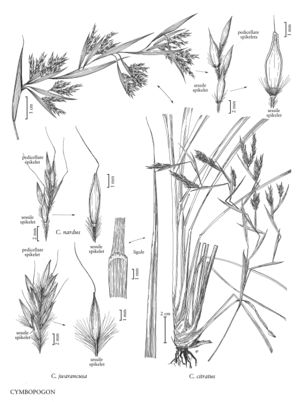Difference between revisions of "Cymbopogon jwarancusa"
FNA>Volume Importer |
imported>Volume Importer |
||
| (5 intermediate revisions by 2 users not shown) | |||
| Line 26: | Line 26: | ||
-->{{#Taxon: | -->{{#Taxon: | ||
name=Cymbopogon jwarancusa | name=Cymbopogon jwarancusa | ||
| − | |||
|authority=(Jones) Schult. | |authority=(Jones) Schult. | ||
|rank=species | |rank=species | ||
| Line 33: | Line 32: | ||
|basionyms= | |basionyms= | ||
|family=Poaceae | |family=Poaceae | ||
| + | |illustrator=Linda A. Vorobik;Hana Pazdírková | ||
| + | |illustration copyright=Utah State University | ||
|distribution=Fla. | |distribution=Fla. | ||
|reference=None | |reference=None | ||
| Line 38: | Line 39: | ||
|publication year= | |publication year= | ||
|special status= | |special status= | ||
| − | |source xml=https:// | + | |source xml=https://bitbucket.org/aafc-mbb/fna-data-curation/src/200273ad09963decb8fc72550212de541d86569d/coarse_grained_fna_xml/V25/V25_1601.xml |
|subfamily=Poaceae subfam. Panicoideae | |subfamily=Poaceae subfam. Panicoideae | ||
|tribe=Poaceae tribe Andropogoneae | |tribe=Poaceae tribe Andropogoneae | ||
Latest revision as of 17:57, 11 May 2021
Plants perennial. Culms to 150 cm, erect or geniculate; nodes often swollen. Basal sheaths glabrous, smooth, whitish-green; ligules 2-6 mm, truncate to acute; blades to 30 cm long, 1.5-4 mm wide, whitish. Inflorescences 15-40 cm, erect; rames 1322 mm; internodes and pedicels densely pilose on the margins and dorsal surface. Sessile spikelets of heterogamous pairs 4.5-5.5 mm; lower glumes lanceolate, shallowly concave distally, sharply keeled, keels not winged; upper lemmas awned, awns 7-10 mm. Pedicellate spikelets about 6 mm. 2n = 20.
Discussion
Cymbopogon jwarancusa is native to Asia, where it is grown for perfume and as a medicine for fevers. It is grown as an ornamental in the United States, and may persist for a considerable time after planting in the warmest parts of the Flora region.
Selected References
None.
